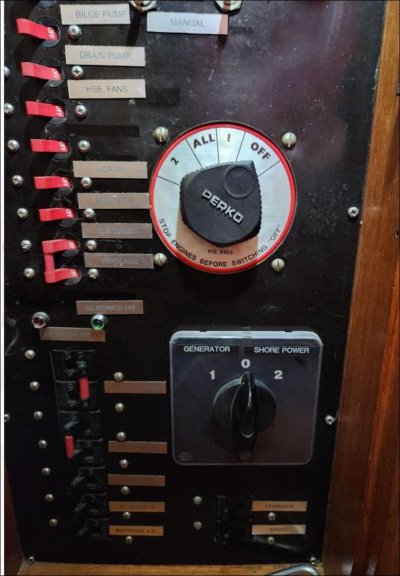harleydude777
Member
- Joined
- Sep 17, 2022
- Messages
- 21
- Vessel Name
- KOA KAI
- Vessel Make
- 1988 Island Gypsy 36
Hi all, O.K. so attached is a pic of (part of) the breaker panel on my 1988 IG36 and my question is, if i want to charge all the batteries while plugged into shore power (currently in heated storage) do i put the top switch on "ALL" and of course the bottom one on "shore"? Not sure what 1 & 2 are as far as which one is the starting batt's bank and which one is the "house" bank, so figured "ALL" would cover both? are all IG's pretty much the same as far as the 1 & 2 hookup? thanks in advance.

